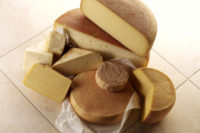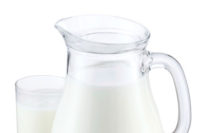Take a look down the yogurt aisle today and you will see a wide variety of offerings. The container shape, size and color choice can play an important role in why a consumer is choosing a particular yogurt and what the manufacturer is trying to convey.
Single-serve yogurt containers can range from 5.3 ounce sizes (the typical size of your standard Greek yogurt container), 6-ounces (found in many non-Greek yogurt forms) and even 8-ounce sizes (like Bellvue, Colo.-based Noosa yogurts). Shapes come in all sorts — standard cup, short and wide cup, fluted and sidecar, to name a few.
“The first job of any package is to protect the quality of what’s inside. A package can’t begin to do anything else unless it does that,” said Michael Neuwirth, senior director of public relations for The Dannon Co., White Plains, N.Y. “After quality assurance, packaging can provide almost endless possibilities to differentiate one product from another.”
He explained, “Color coding is an important topic in the yogurt category because of the massive volume of SKUs in a given shelf set. With more than 200 items on the average shelf set today, shoppers need color cues to find what they’re looking for.”
Like many processors, Dannon has dedicated colors for its range of products — red for Danimals, purple for Light & Fit, blue for Oikos and green for Activia. These colors help shoppers navigate the crowded yogurt section and find what they’re looking for, said Neuwirth.
For some processors, like Yoplait, a brand of General Mills, Minneapolis, the size and shape is also an important part of the brand and history.
Yoplait’s current traditional yogurt cups tie into the design of its original wax paper cup that “originally was designed with a smaller hole at the top to limit air exposure and preserve freshness,” said Susan Pitt, marketing manager for Yoplait. “This cup shape is iconic and says ‘Yoplait’ with its shape, not just the branding on the cup.”
According to Pitt, the Greek yogurt category is defined by its short and wide “bowl-like” package. She said that the Greek yogurt container size and shape “allows room for mixing in additional ingredients, like granola or fruit, a common practice with Greek yogurt.”
Pitt explained that in order for consumers to know that Yoplait has a Greek offering, the company needed it to be in a container that aligned with the category expectations (i.e., short, wide and holding 5.3-ounces).
Yoplait also utilizes color coding in both its Original and Greek lines: red for Original, blue for Light and purple for Whips. The company uses green for its lactose-free yogurts. These color designations help direct consumers to their favorite flavor faster, said Pitt.
For manufacturers, printing techniques can play an important role — from cost, expectations and grabbing attention on the shelves.
According to Dave Weaver, product director for Rigid Open Top Containers from Berry Plastics, Evansville, Ind., there are many decorating technologies utilized for yogurt packaging in the industry today.
“Offset print is the most widely used decoration method and is a cost-effective option for simple prints and half tones,” said Weaver. “Shrink sleeves offer 360 degree photographic quality artwork with a high-gloss finish. Shrink sleeves are a more expensive option than direct printing, but have gained traction in the yogurt market over the past couple years.”
Weaver continued, “In-mold labels [IML] are great for dual-compartment containers [that is, sidecar]. The labels provide vibrant graphics with the ability to print minimum font sizes. IML tooling has higher capital costs, but is advantageous if many SKUs are involved. Efficiencies in manufacturing are gained by switching out labels in a magazine versus setting up a print station.”
According to Michael Corrigan, vice president of sales and marketing for Airlite Plastics, Omaha, Neb., “Direct printing is the most economical decorating process, and IML offers superior graphic capabilities and the ability to decorate round and other than round shapes.”
Pitt emphasized that choosing a container style is a difficult decision to make and one that must be weighed by consumer need, brand identity, cost and manufacturing ability.
“The weight each of these areas is given will be dependent on the processor. Understanding your targeted consumer, their use and your processing capabilities will lead to the container that is right for both your consumer and your process,” she said.









